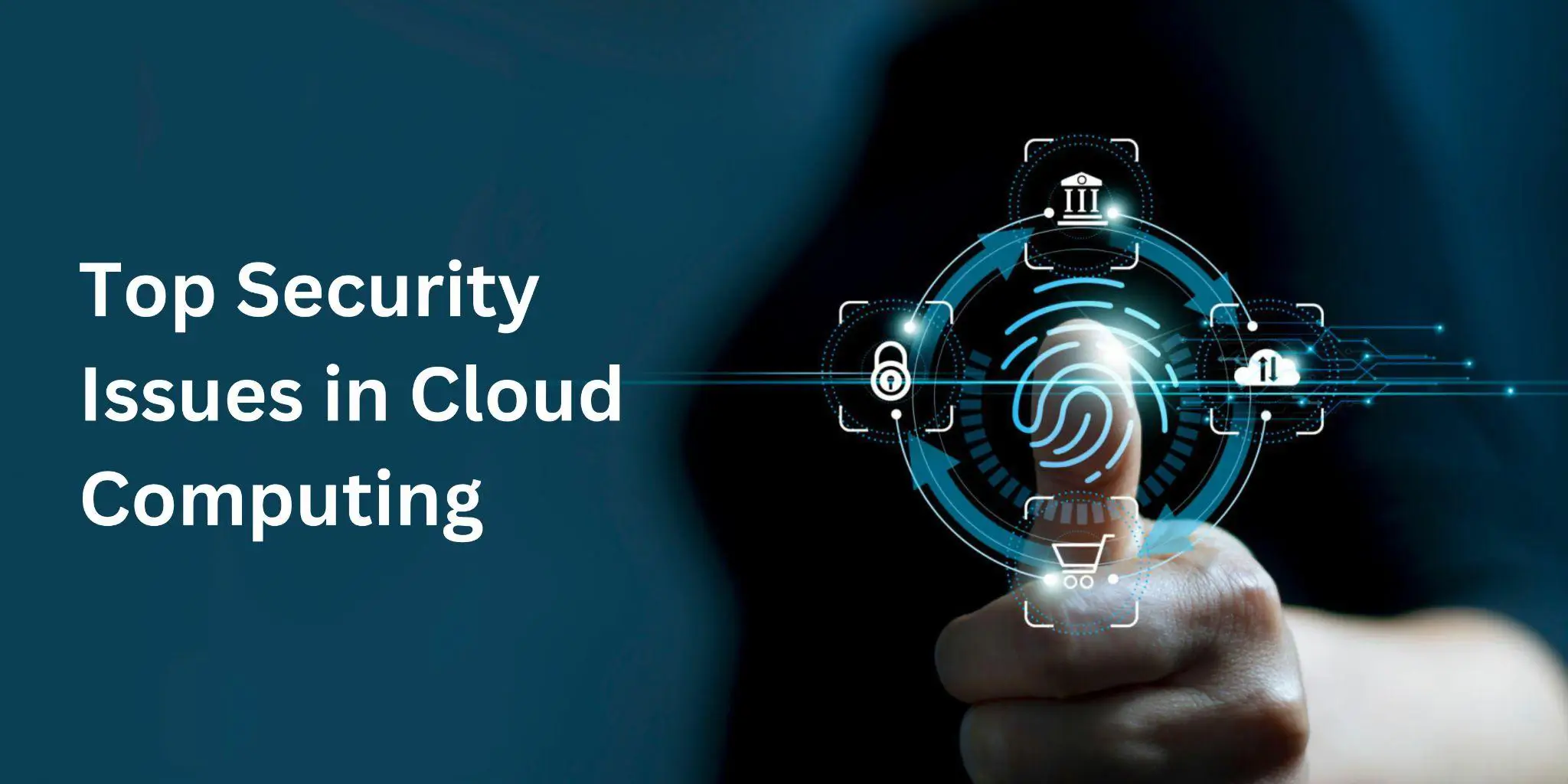Cloud Computing Security Issues or Challenges
In today’s digital era, the cloud offers endless potential for businesses and individuals alike. Its flexibility and scalability have developed the way we work and communicate. But with great power comes great responsibility, especially when it comes to protecting your valuable cloud data.
Top security issues in cloud computing present to businesses and how they impact operations. Understanding these issues empowers businesses to implement measures that protect their data and ensure seamless cloud operations. It helps them grow by providing flexible, cost-effective IT solutions. Whether you are a business owner, an IT professional, or simply interested in cloud technology, this article provides valuable insights on what is cloud computing and the challenges and risks of cloud computing.
What is Cloud Computing?
Cloud computing refers to using the internet to access computing services like servers, storage, databases, and software. Instead of keeping and managing physical computer hardware, businesses and individuals can get these services from a cloud provider when needed.
Infrastructure as a Service (IaaS):
Offers virtualized computing resources.Platform as a Service (PaaS):
Provides a platform for app development and management.Software as a Service (SaaS):
Delivers software applications over the internet.Function as a Service (FaaS):
Its Serverless Computing and allows running individual functions or pieces of code in response to specific events without managing the entire application.Database as a Service (DBaaS):
Provides managed database services, handling database management tasks such as backups, updates, and scaling.
Cloud Computing has Several Benefits:
Modifications:
Users can adjust their resources based on demand, making it flexible and profitable.User-friendliness:
Services are accessible from anywhere with an internet connection, enabling remote work and collaboration.Cost-Efficiency:
Users only pay for what they use, avoiding high upfront costs.Dependability:
Cloud providers offer dependable infrastructure with minimal interruption.Safety:
Cloud providers invest in strong security measures to defend data and infrastructure.
Overall, cloud computing has transformed how computing resources are used and managed, providing a flexible and cost-effective alternative to traditional IT setups.
Need of Cloud Computing
Cloud computing removes the need for upfront investments in hardware and infrastructure, making it cost-effective. It also provides reliable and safe infrastructure, allowing businesses to focus on their important activities while leaving the IT management to cloud providers. Cloud computing is important for businesses and individuals because it offers flexibility. This means you can upgrade resources based on your requirements, and access services from anywhere with an internet connection.
Security Issues in Cloud Computing

Security challenges in cloud computing like data breaks, loss, and compliance issues. Lack of control, insider threats, and shared accountability adds difficulty.
Insider Threats:
Sometimes, the biggest threat to security comes from inside a company. Employees might unintentionally or on purpose cause security problems. In 2023 Tesla suffered a major data breach that was done by two former employees, who leaked sensitive personal data to a foreign media outlet. The leaked information included names, addresses, phone numbers, employment records, and social security numbers of over 75,000 current and former employees.
Shared Responsibility Model:
In cloud computing, both the company and the cloud provider share the responsibility for security. But it can be unclear who is responsible for what. In 2020 SolarWinds supply chain attack exploited susceptibilities in the software supply chain, leading to widespread data breaches across multiple organizations that trusted on the compromised software.
Account Hijacking:
Account hijacking involves illegal access to user accounts, leading to possible data breaches and misuse. Weak authentication methods can make accounts lead to hijacking. US-based mortgage settlement and real estate financial services company First American Financial Corp faced one of the biggest hacks in history in 2019.
Lack of Visibility and Control:
When businesses move to the cloud, they may lose visibility and control over their infrastructure and data. This lack of oversight can delay the detection and management of security happenings. In 2017 Uber data breach involved hackers gaining access to Uber's cloud storage and stealing personal data of 57 million users due to a lack of robust security measures and oversight.
Data Breaches:
Breaches can occur if security measures are insufficient, leading to unauthorized access to data. A big worry in cloud computing is the risk of data breaches, data loss, and data leakage. Storing important data in the cloud makes it weak to hackers. Also, accidents or attacks can lead to data loss or leakage. In 2019 Capital One data breach compromised the personal information of over 100 million customers due to a misconfigured firewall in their cloud infrastructure, highlighting the risks of data leaks in the cloud.
Cloud Computing Security Challenges
Cloud computing security challenges include data breaches, compliance complexities, shared responsibility for security, limited visibility and control, and risks of malware and unauthorized access.
Challenges in cloud computing:
Insufficient Cloud Security Expertise and Skill Sets:
Many organizations lack the expertise needed to efficiently safe their cloud environments, leading to breaks in security practices.
Cloud Compliance:
Ensuring compliance with industry regulations and standards in a cloud environment can be complex, requiring dedicated efforts to meet legal requirements.
Identity and Access Management:
Handling of user identities and access control in cloud environments is vital for security, but it can be challenging to implement and uphold properly.
Data Management:
Efficiently handling and defensive data stored in the cloud, including backup, recovery, and data lifecycle management.
How can you Minimize security risk in Cloud Computing?
Some common tips to minimize cloud computing security risks:
Strong Access Controls:
Implement robust authentication and authorization mechanisms to control access to your cloud resources.
Data Encryption:
Encrypt sensitive data both at rest and in transit to protect it from unauthorized access. Use strong encryption algorithms and key management practices.
Regular Security Audits:
Conduct regular security audits and assessments of your cloud environment to identify and address vulnerabilities and compliance issues.
Compliance Management:
Stay updated with industry regulations and compliance requirements relevant to your business. Ensure that your cloud environment meets these standards.
Backup and Recovery:
Regularly backup your data and have a solid disaster recovery plan in place to ensure business continuity in case of data loss or breaches.
Partnering with AAHENT can significantly minimize security risks in cloud computing. AAHENT offers robust security solutions, including encryption, access controls, and real-time monitoring, to safeguard data and infrastructure. Additionally, AAHENT provides expertise in compliance management, ensuring adherence to industry regulations.
Need further assistance with cloud computing security or have questions? Contact us

